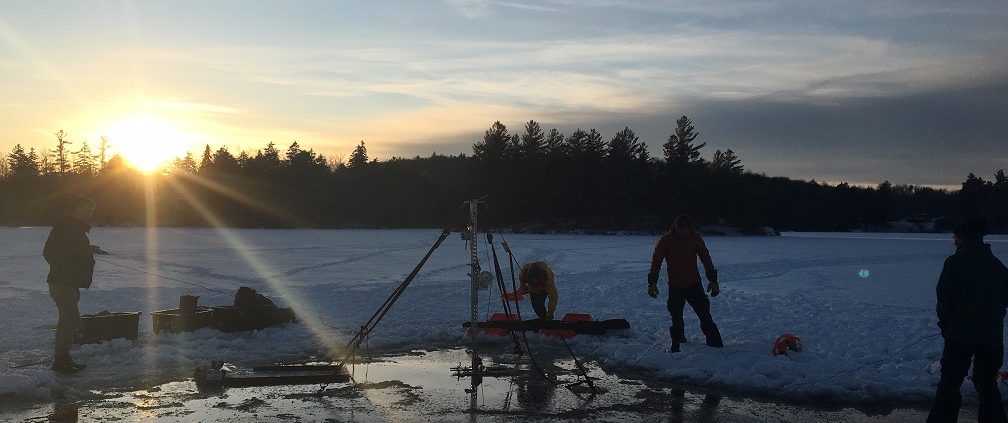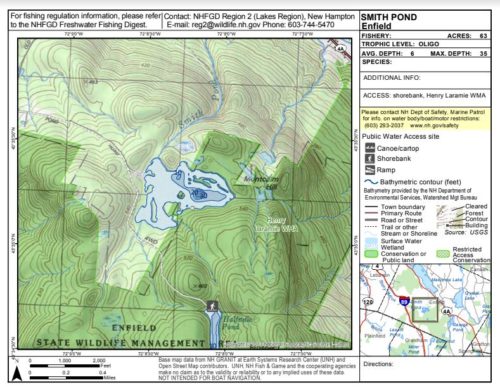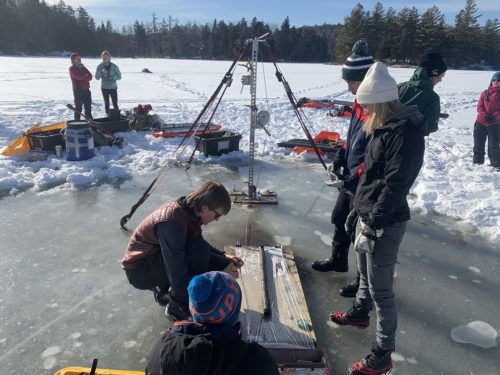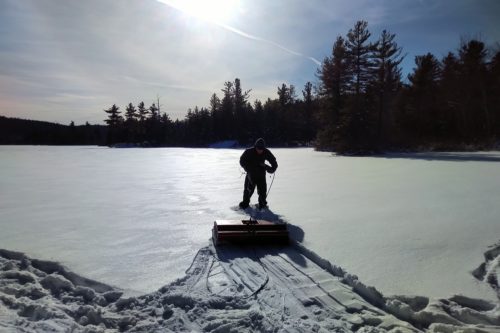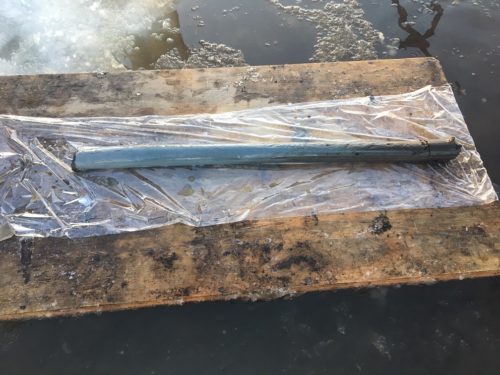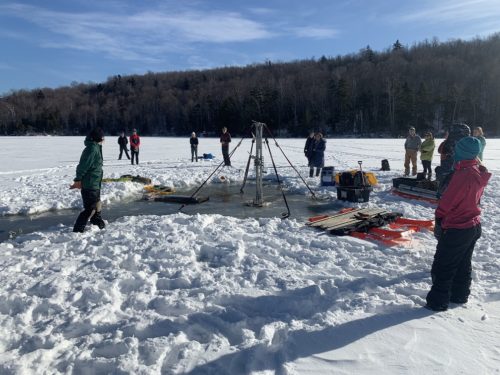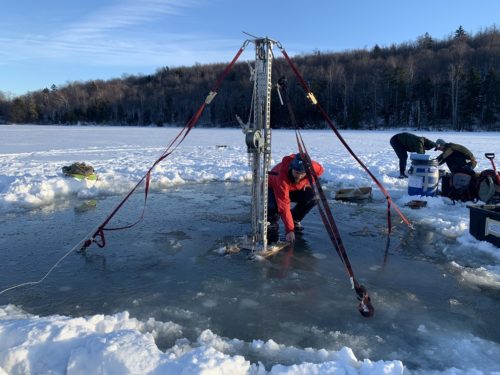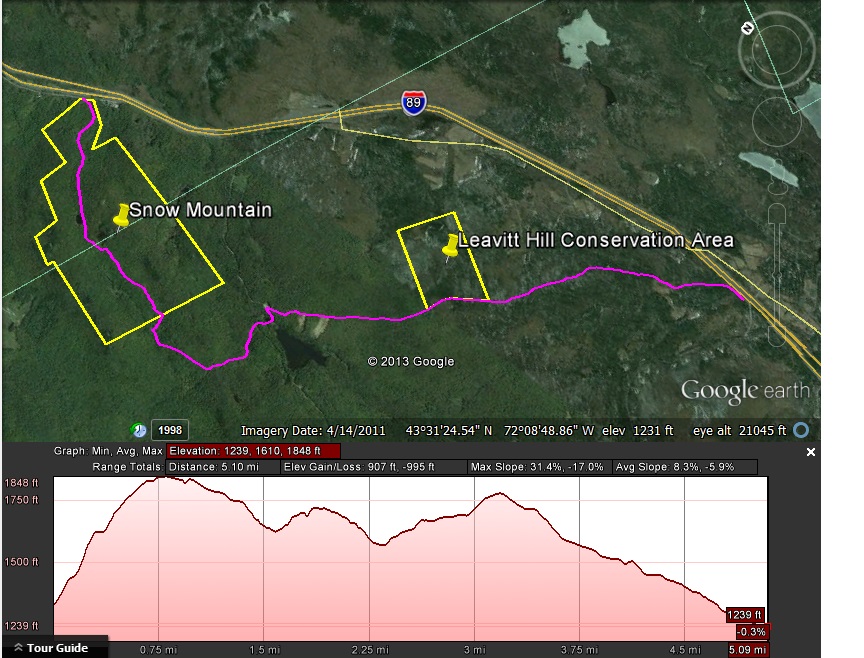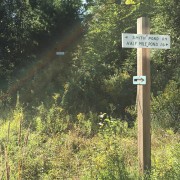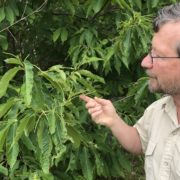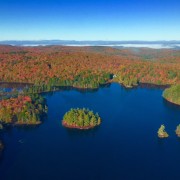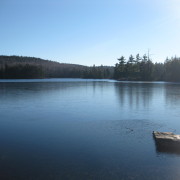Smith Pond Geology
On January 22nd, several Dartmouth Professors took their classes out to Smith Pond Shaker Forest to learn about the geology of the area.
Meredith Kelly, Associate Professor of Earth Science and her geology class drilled through the ice at the deepest point of the pond (10m) to take sediment cores. They hoped to reach sediments that had accumulated since the end of the last ice age – 14,000 years ago!
Steve Arcone Adjunct Professor of Engineering at Thayer and Ed Meyer Senior Lecturer in Earth Science also took a class to the pond to use Ground Penetrating Radar (GPR) to test the depth of the pond and create a map. While they did that they also tested the conductivity of the water (a measurement of salinity) and found the water in the pond to have very low conductivity. Steve said this was due to it’s remote location and lack of human inputs into the water, as well as the quartzite bedrock in the area.
UVLT was very happy to help facilitate this research and education. We believe in using our conservation areas to benefit the whole community which includes helping to facilitate educational opportunities for students of all ages.

